Behavior Management Teaching Resources
Bring your classroom behavior management to the next level this school year with behavior management strategies and systems, classroom rules and expectations, student and classroom reward charts and more resources created by teachers for teachers like you!
This collection of teaching resources was developed by the expert teachers of Teach Starter to save teachers valuable time with printable and digital options ready to be downloaded and used — no extra prep necessary!
Just getting started with this part of your overall classroom management strategy? Jump in with this quick guide from our teacher team, including a definition of behavior management and strategies you can use in your classroom.
What Is Behavior Management?
Behavior management is a proactive strategy for teachers to handle behavior in the classroom. By setting up solid student organization strategies, creating clear rules and expectations, and providing consistent feedback, teachers set students up for success.
A good behavior management strategy will give students:
- Specific expectations
- Positive reinforcement when expectations are met
- Fair and consistent consequences when expectations are not met
One of the most popular behavior management strategies these days is CHAMPS, which stands for Conversation, Help, Activity, Movement, and Participation. The goal is to provide students with an instructional structure that promotes responsibility and motivates students.
Why Is Behavior Management Important?
Strongly backed by research, behavior management strategies like CHAMPS have been shown to:
- Provide students with a sense of connection to school and their peers
- Promote a productive learning environment
- Minimize classroom disruptions
Behavior Management Strategies to Use in Your Classroom
Before we dig in too deeply, it's worth stressing that the goal of the strategies you're about to read is to accentuate the positive, that is, to keep control of the behavior in your classroom in a positive way.
We've also included a mix of strategies that will help you prevent negative behavior as well as some simple things you can do to curb unwanted behavior in the classroom.
Redirect
This technique is simple, yet effective. When you notice a child is off-task, simply move their attention from one thing to another. For example, if one student is distracting another student, you may direct their attention to the work at hand by saying you'll be over in a few minutes or simply asking that student what they are up to.
Ignore Secondary Behavior
When a child is being warned about inappropriate behavior, you may notice a secondary behavior, such as an eye roll or a delayed response to a question. This behavior is often to avoid humiliation in front of peers.
If the initial poor behavior has stopped, ignoring the secondary behavior — as long as no one is in danger and it hasn't caused additional classroom disruption! — can prevent the situation from escalating. If you feel you need to, you may opt to talk to that student one on one after the lesson to reflect on the situation (without the audience of the other students).
Plan Your Transitions
A transition in a classroom is when a student moves from one activity to another. It can be a significant change such as transitioning from gym or the cafeteria back into the classroom or a more minor change such as transitioning from time on the carpet back to their seats.
For little brains, transitions can be tricky as they need to go from an active state to a focused state ready for learning, and this is where inappropriate behavior may start to fester.
Planning for how you and your students should transition can help avoid this situation from escalating. A simple transition for the example of going from PE back to class, for example, could be to use a fun movement such as walking like a ballet dancer back to class.
Make sure to explicitly teach students what they should be doing during transitions, so they know the sort of behavior you expect!
Offer Choices
Providing a student with choice is extremely powerful! It makes them feel like they are in the power seat, when in fact, you've planned it out beautifully! When you notice inappropriate behavior, instead of issuing a demand, offer a student a choice of two options. The first choice would be the route you'd like them to take. The second is the consequence of not taking the first option.
For example, "Zane, would you like to remove yourself from the distracting spot you're sitting in, and complete your work? Or, would you like to stay with me at lunchtime to complete the work then?"
You'll find that most of the time, the student will take the better option in this scenario.
Attention Grabbing
This is similar to the "redirect'" option, but this is a strategy to use if a number of students are starting to get off task. Use some fun attention-grabbing techniques like call and response ( you can download our Attention Grabbing Phrase Cards and use those!).
You can then redirect the group's attention back to the work by providing some more information that may support them in finishing the task.
Use Positive Non-Verbal Reminders
You don't always have to use your voice for your behavior management to work. Non-verbal reminders can be equally powerful and limit the disruption to the class. Simple non-verbals like stopping what you're saying and smiling at the student who may be off task is sometimes all that is needed for some students. This lets them know you know they're off-task in a gentle way.
Another non-verbal reminder is to just lower your body down to the level of the child while you continue with the teaching, or do a simple tap on their desk as you walk past.
Set Up a Calm Corner
Little kids experience BIG emotions, and often when they are trying to deal with these big emotions, they struggle with self-regulation.
Another behavior management strategy that will work for some children is just some time away from the hustle and bustle of the classroom. If you have the space, set up a corner of the classroom for students to 'chill out.' You can fill the space with fidget toys, weighted blankets, wobble cushions, a tub of sensory toys and similar objects.
If you are noticing a student that isn't responding to the smaller behavior management strategies, 5 minutes in the chill-out corner/area may help this student.
Another idea — sending a student to another teacher with a note that says something simple such as "John needed some space." This gets the student out and about and gives them some purpose by having the very important job of delivering the note to the other teacher.
Get Them Moving
We know a student's attention span is short, and yet we expect them to sit and listen and use their brains for long periods of time ... often longer than their age allows. Ensuring you have had a lot of movement integrated into your day is a great way to limit the number of behavior situations you may encounter in a day.
It could be as simple as a "stop work and stretch at your desks" type situation, but you may be surprised by how planning these active brain breaks into your day can improve behavior in the classroom.
- Free Plan
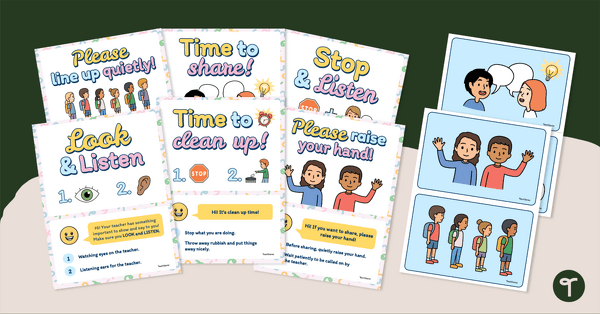
Classroom Expectations - Behavioral Visual Support Posters
Set clear expectations with a visual classroom expectations poster for the classroom.
- Free Plan
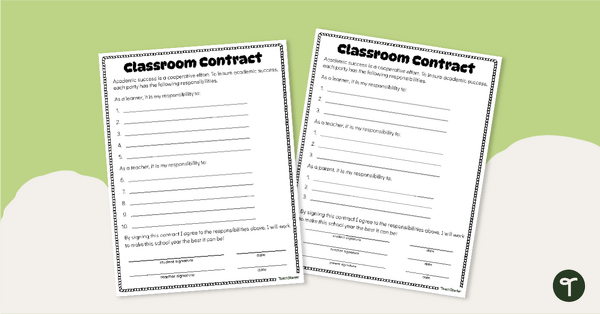
Student Behavior Contract Template
Create a classroom community and ensure adherence to rules and procedures with a printable Student Behavior Contract Template.
- Free Plan
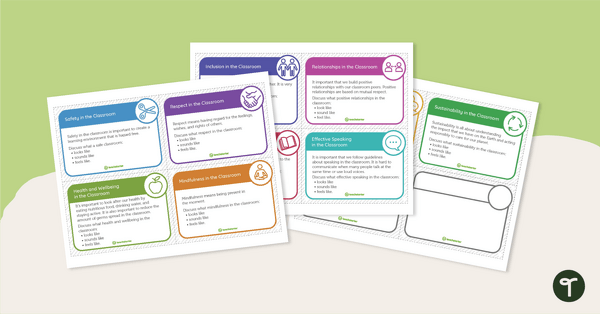
Student Behavior Discussion Cards for the Classroom
Print free student behavior discussion cards to encourage your class to think about what a positive learning environment looks like, sounds like, and feels like.
- Free Plan
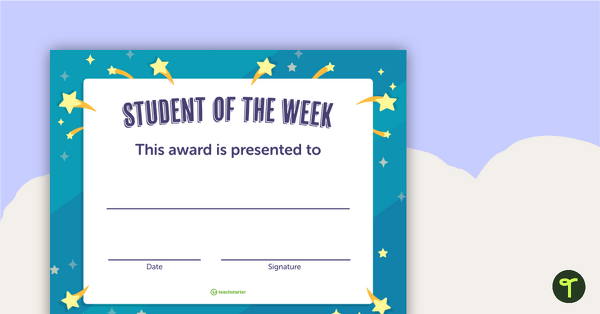
Student of the Week Certificate – Upper Grades
Celebrate your Student of the Week student with this certificate for upper grade students.
- Plus Plan
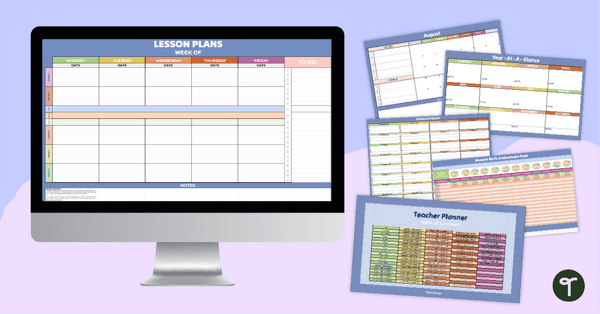
Google Sheets Digital Teacher Planner
Start the school year with a ready-made digital lesson plan and record book using our Google Sheets Digital Lesson Planner.
- Plus Plan
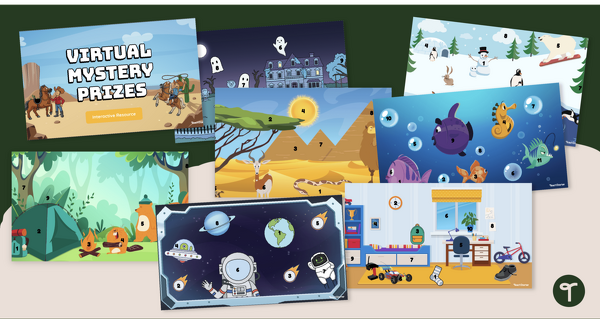
Mystery Prize Picker - Interactive Behavior Rewards
Reward your students with special surprises by using our interactive behavior reward picker!
- Free Plan
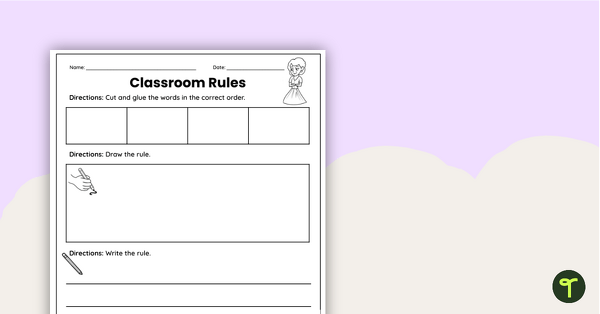
Rules in the Classroom Worksheet Pack (K-1)
Teach classroom rules and procedures and review early writing skills with a free Rules in the Classroom Worksheet pack for primary grades.
- Plus Plan
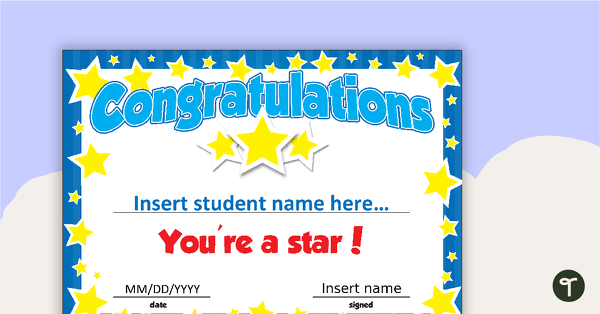
You're a Star Certificate
Give positive feedback to your students with this You're a Star Certificate.
- Plus Plan

Our Classroom Rules - Set of 8 Posters
Remind students of classroom rules and expectations with this set of 8 posters.
- Plus Plan

Name 5 Things - Calming Strategy Task Cards
Use the ‘Name 5 Things’ Calming Strategy in your classroom to help students regain self-control with printable calming activity task cards.
- Plus Plan
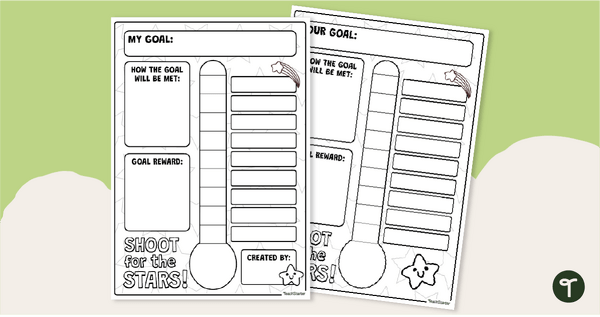
Goal Setting Thermometer Template
Set and track individual and whole-class goals with a printable goal-setting thermometer template.
- Free Plan
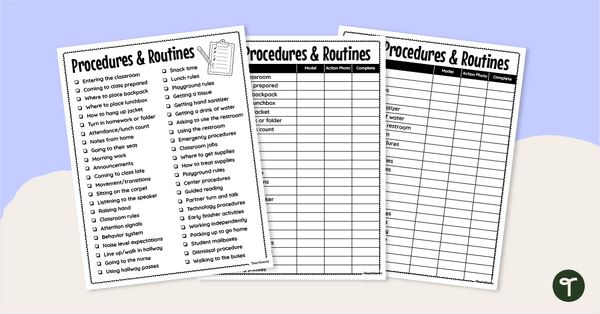
Classroom Procedures Checklist
Determine and track which classroom procedures and routines you will teach at the beginning of the school year with a classroom procedures checklist and tracking sheet.
- Plus Plan
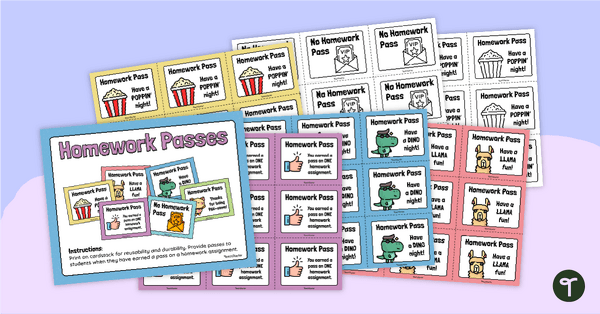
Printable No Homework Passes
Reward students with a No Homework Pass using our printable homework pass templates.
- Free Plan
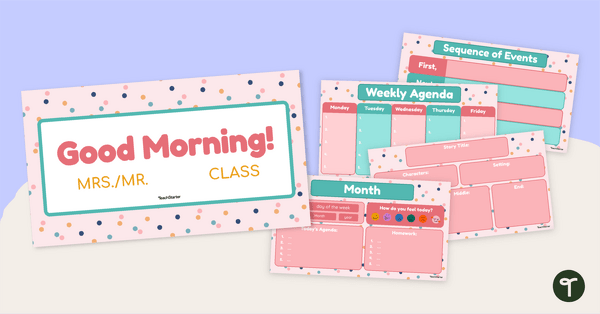
Free Google Slides Template for Teachers - Pink Spots
Prepare and instruct your students on day-to-day classroom happenings with a ‘Pretty in Pink’ Google Slides Template for teachers.
- Plus Plan
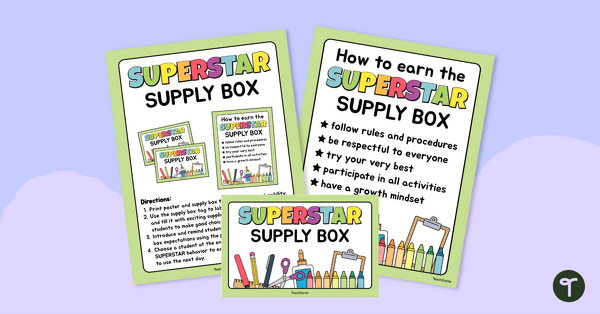
Superstar Supply Box – Behavior Incentive
Promote and acknowledge positive behavior with a superstar supply box template and accompanying poster.
- Free Plan
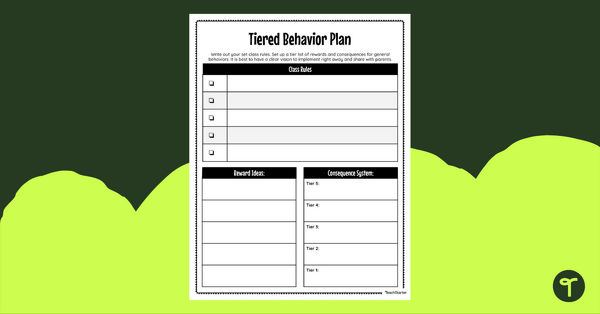
Tiered Behavior Plan – Editable Template
Establish clear expectations, rewards and tiered consequences with this free behavior plan template.
- Free Plan
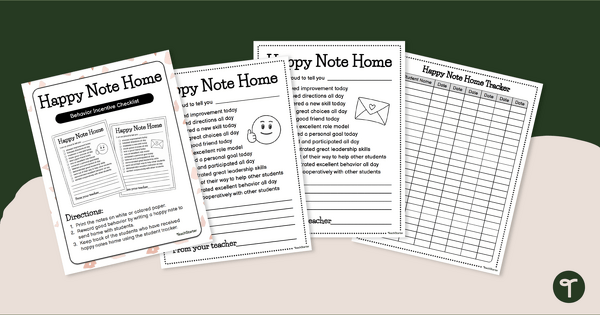
Happy Note Home - Brag Sheet Templates
Communicate positive messages to parents and guardians with a Happy Note Home letter template.
- Free Plan
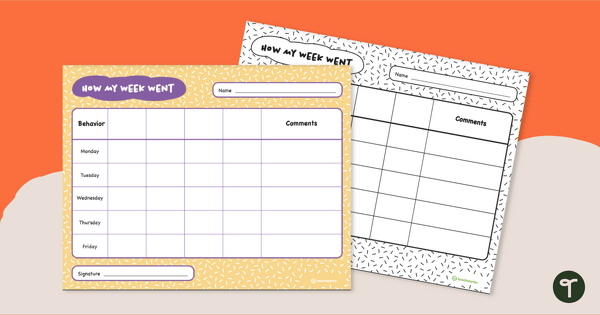
Weekly Behavior Tracking Sheet
Track and reward student behavior with a printable weekly behavior chart.
- Plus Plan

Think Sheet for Behavior – Lower Grades
Invite your primary students to reflect on their behavior choices with this behavior think sheet.
- Free Plan
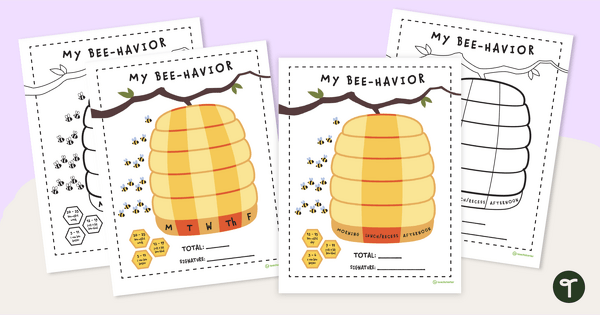
Printable Behavior Tracker - Bees
Track individual student behavior in your classroom with a printable "Bee-havior Chart"!
- Free Plan
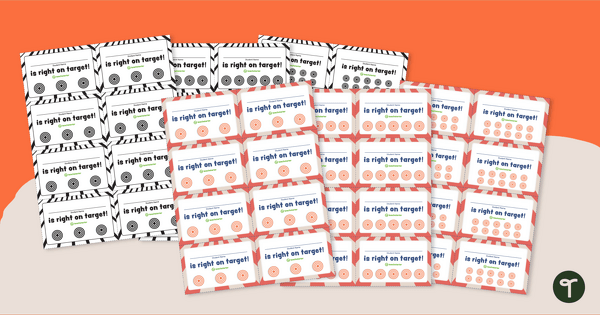
Behavior Punch Card – Right on Target!
Motivate your students to be on target with this punch card template.
- Plus Plan

Behavior Reflection Sheet – Upper Grades
Get your students to reflect on their behaviors with this reflection worksheet.
- Plus Plan
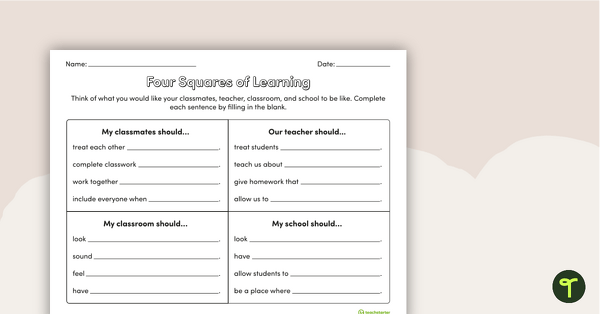
Four Squares of Learning - A Getting to Know You Worksheet
Learn your students' expectations for the new school year with this first week of school activity.
- Free Plan
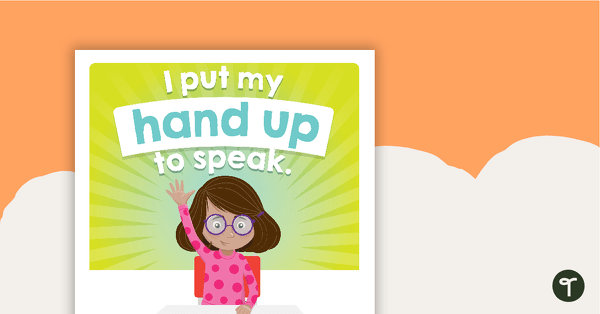
I Put My Hand Up to Speak Poster
A poster to scaffold appropriate behavior for the students when speaking in class.
- Free Plan
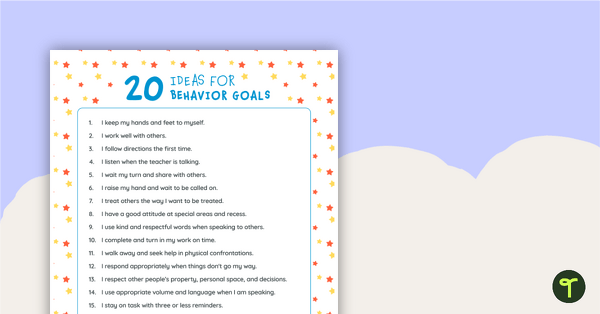
Sample Behavior Goals
Use this list of 20 behavior goals to help when creating your students' behavior trackers.
- Plus Plan
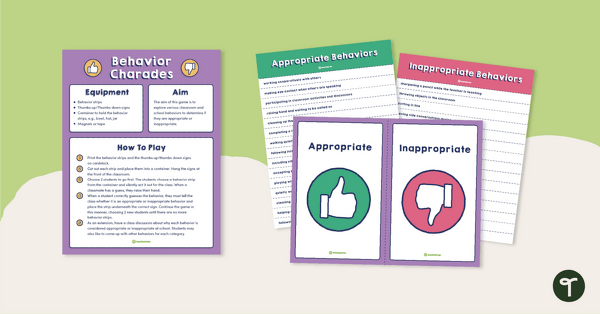
Charades Inspired - Good Behavior Game
Explore appropriate and inappropriate behaviors during the school year with a charades-inspired Good Behavior Game.
- Plus Plan
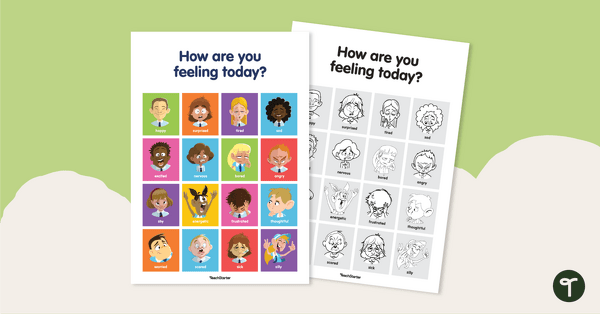
How Are You Feeling Today? Chart
Help students to recognize and identify their feelings and emotions with this colorful 'How Are You Feeling Today?' Chart.
- Plus Plan
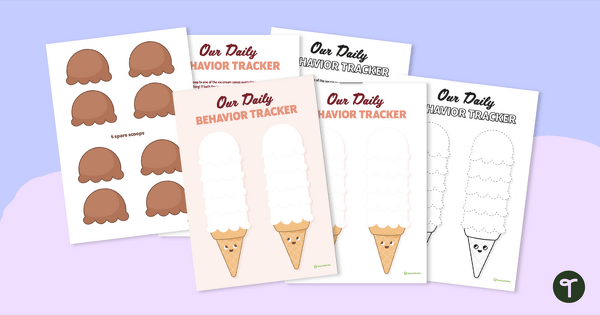
Ice Cream Party Incentive Chart
Track your class' "sweet" behavior with a fun ice cream party incentive chart.
- Plus Plan
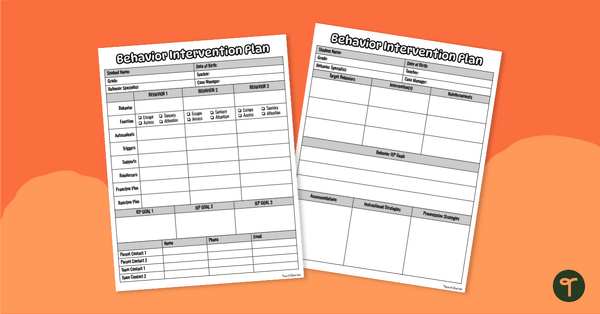
Behavior Intervention Plan Template
Use our Behavior Intervention Plan template to monitor and track student behavior interventions and results.
- Plus Plan
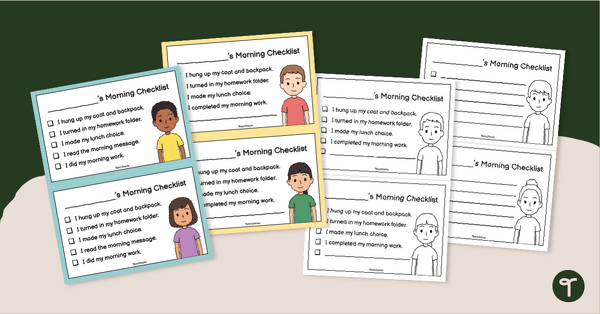
Morning Routine Checklist Pack
Start your day right and promote independence with a morning routine checklist.
- Plus Plan
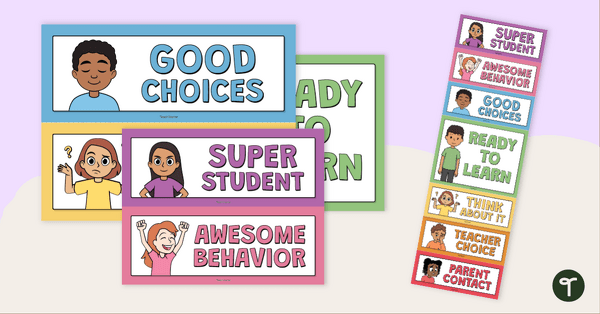
Behavior Clip Chart
Manage classroom behavior in a visual way with a printable behavior clip chart.
- Plus Plan
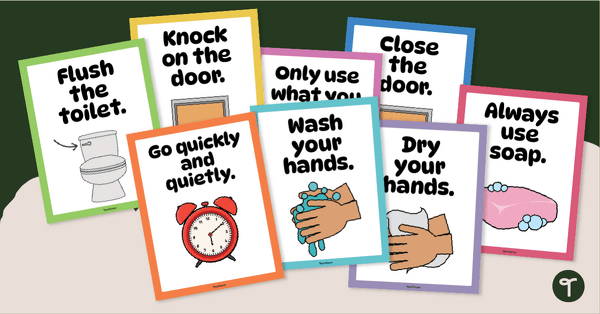
Bathroom Rules Poster Pack
Reinforce expectations for behavior in the restroom with a printable Bathroom Rules Sign Pack.